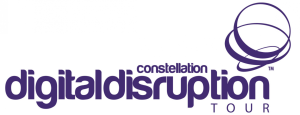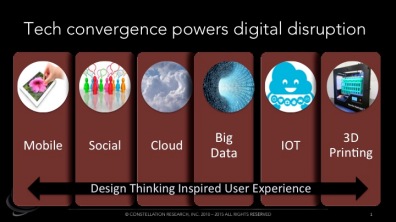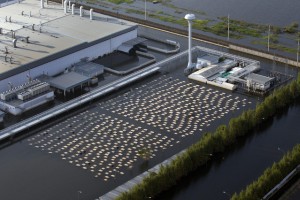Last week I was in Atlanta with our founder Ray Wang as well as with my colleague Alan Lepofsky. We were hosting a successful second road show event for Ray’s wonderful book – Disrupting Digital Business. During the event we were able to listen to leaders from Adobe and Infosys about how they are dealing with the rise of digital in their businesses. Of course we also heard from Ray on main stage about the key findings of his book. Click here for a link to the tour information.
Alan and I had the opportunity to host two round tables. Alan focusing on how these trends will impact the future of work and collaboration while I focused on retail and the supply chain.
As for my round table, both sessions had lively discussions around how this digital revolution is fundamentally changing the retail and overall supply chains. Here are some take aways:
- Digital is impacting the future of the store. What is the role of the storefront? eCommerce, mobile, social were a few areas that have had deep impact on how we trade and the role of the store front. We covered such areas as stores becoming multifunctional assets – acting as both traditional stores as well as distribution centers. Or even becoming primarily show rooms. One of the issues that this creates is how the financials will also have to change. Revenue per square foot may not be a true measure of a store’s usefulness with these new functions. Savvy CFOs need to be aware of this shift and figure out how to navigate those waters.
- Can players within the supply chain work to do a better job with data sharing? A question we have been dealing with as long as there have been supply chains. Anyone who has played the beer game can attest one of the biggest hurdles is to have better data exchange amongst all the players in the supply chain. While all the parties know that conceptually this would help all their causes, the ability and desire to actually share data continues to be an issue. Clearly based on our discussion at the round table this has not been adequately solved. An ever increasing infusion of digital technology within the supply chain is not a panacea. The ability to have players within the supply chain to share more information is all about process change, cultural transformation and trust. What digital and data can provide, are some hard numbers to demonstrate the value of being more open. But remains a challenge.
- Our shopping experience has only seen the beginning of disruption! We spent a good amount of time thinking ahead, what will the retail experience look like in 10 years. Everything from virtual reality shopping, similar to what Burberrys has attempted in London, to shopping experienced leaning on driverless vehicles that would whisk us from our homes and through stores to purchasing products in customized packages, quantities, sizes – true customization for the individual. All great examples, all that could come true due to the digital revolution we are in the midst of. Of course few CxOs are willing to invest capital in futuristic concepts that do not have a tangible ROI. As with many of these changes, CxOs need to focus on the use cases that can provide returns and benefits in the short term, build on these use cases to lay down the digital rail road tracks that will be necessary for the more futuristic opportunities.
A whirlwind tour last week, between being in San Diego and Atlanta, but the Digital Disruption tour was a wonderful event. Selfishly it was great to spend time with companies such as Coca Cola, Carters, Adobe and Infosys to name a few and discuss how digital is impacting their businesses. The road show will continue, now swinging through Europe. Well worth attending.






